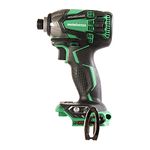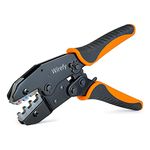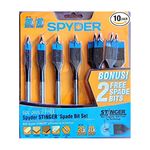Q:
A friend recently told me to use drain cleaner on my gummed-up circular-saw blades. I tried it, and it worked like a charm—even took the writing off the blade. A couple of days later, I told a carpenter friend what I’d done, and he said he thought using drain cleaner on a sawblade wasn’t a good idea and may even be dangerous, affecting the carbide in a negative way. Who should I believe, and what other alternatives do I have?
John Najarian, Haverhill, MA
A:
Michael Standish, a woodworker and writer in Jamaica Plain, Massachusetts, replies: There are dozens of drain-clearing products, and most are alkaline, not acidic, compounds. Although both alkalis and acids can unclog waste lines, they have very different properties. A relevant example is that acids (especially from the adhesives commonly used for plywood, particleboard and MDF) are notorious for attacking the cobalt binder in carbide teeth, while alkalis have almost no such effect.
Alkalis are used by many sharpening services because they work, i.e., they remove pitch well. Still, I was unable to find anyone willing to assure me about the safety of cleaning blades with alkaline (caustic) chemicals such as lye, drain cleaner or oven cleaner (another popular folk remedy for gummed-up blades).
I talked to a number of people who run Boston-area steel or sharpening businesses, and most concurred that leaving a chemical residue on a metal surface, even for a short time, is poor practice. Caustic compounds can leach constituent oils from steel.
The general consensus was that plenty of people and their blades have survived such cleanings, based on reports from the field, but alkaline substances are not particularly metal-friendly (nor user-friendly: They commonly cause severe burns to the eyes and skin). Using caustics carries a potential risk of compromising a blade’s integrity, a risk that becomes more impressive when you consider that the rim of a 10-in. sawblade moves at 100 mph or more, depending on motor speed.
In trying chemical alternatives to caustics, I’ve used dedicated resin-and-pitch removers, solvent-based paint removers and profoundly toxic surfactants such as xylol. I’ve even tried Murphy’s Oil Soap. They all work, but I usually need to do some scrubbing with a toothbrush or with a brass wire brush to produce acceptable results.
I’ve been told that some spray lubricants penetrate beneath pitch deposits to loosen them, and I wonder if Teflon sprays might work the same way. A semipreventive method was suggested by a cabinetmaker who takes a few quick passes over his sawblades with paste wax and fine steel wool before each use. This practice prevents the buildup of large, stubborn pitch deposits and leaves a protective film behind. I’ve also heard of a similar technique using paste wax and the green scrubbing pad on the back of a kitchen sponge to remove built-up pitch and leave a protective coating. However it’s done, once the blade is clean, it should be coated to retard the accumulation of cutting debris.
Fine Homebuilding Recommended Products
Fine Homebuilding receives a commission for items purchased through links on this site, including Amazon Associates and other affiliate advertising programs.

Metabo HPT Impact Driver (WH18DBDL2)


Spyder Stinger Spade Bit


























View Comments
If the question is relevant to you, I found a small selection of the best tools from which you can find the cleaning product you need.
https://homemakerguide.com/best-drain-cleaner/